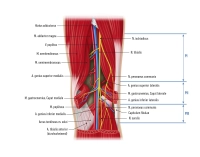- The abdominal aorta divides at the aortic bifurcation (around level L4) into both common iliac arteries
- In turn, each common iliac artery divides into an internal and external iliac artery
- With its visceral branches, the internal iliac artery supplies mainly the pelvic organs, while its parietal branches ensure the blood supply to the lower extremities
- The external iliac artery contributes to the pelvic blood supply and, after passing through the vascular compartment (lacuna vasorum retroinguinalis), becomes the femoral artery
1. Internal iliac artery
Origin |
|
Course |
|
Relation |
|
Branches | Visceral branches:
Parietal branches:
|
Arterial blood supply for |
|
2. External iliac artery
Origin |
|
Course |
|
Relation |
|
Branches |
|
Arterial blood supply for |
|



